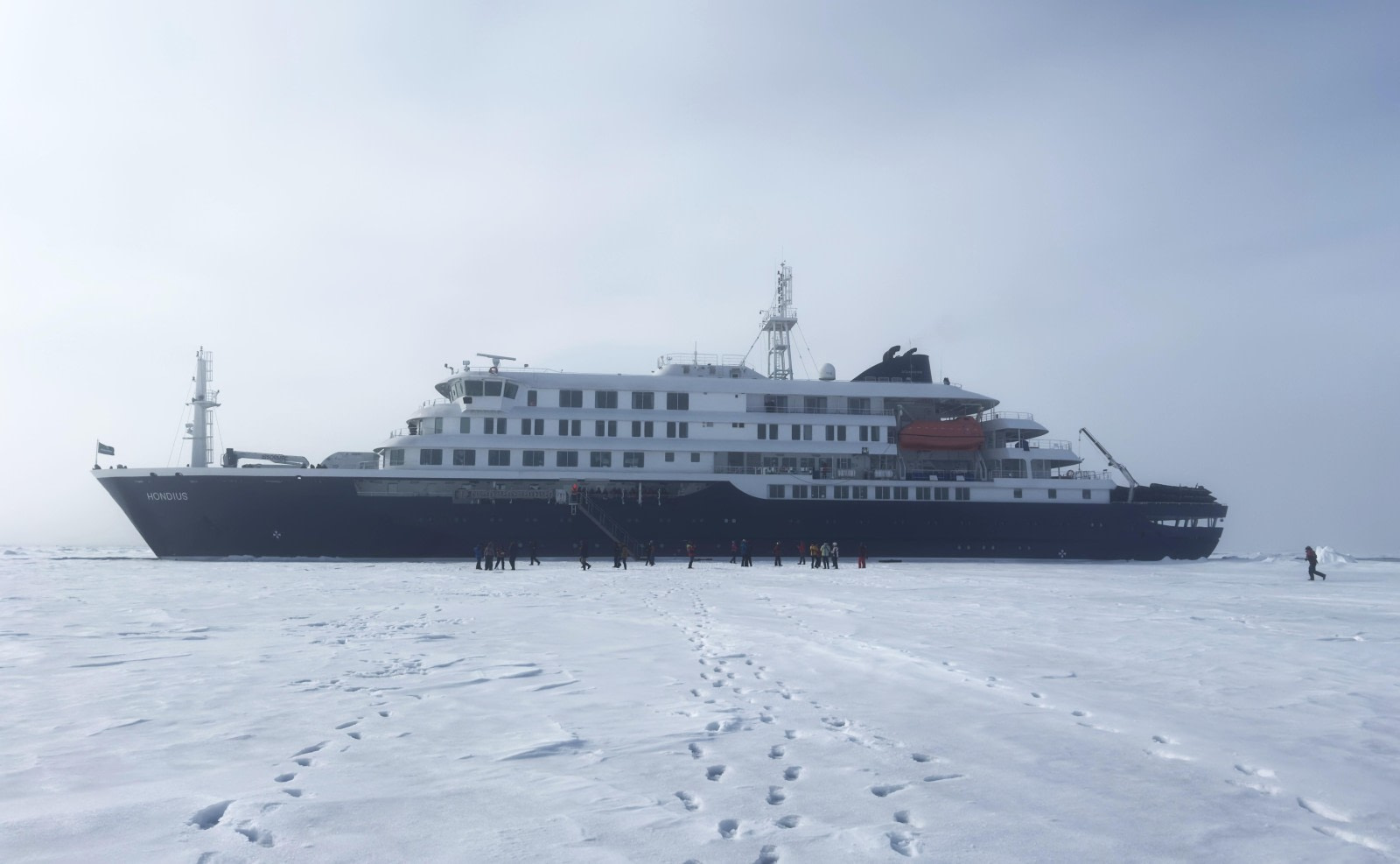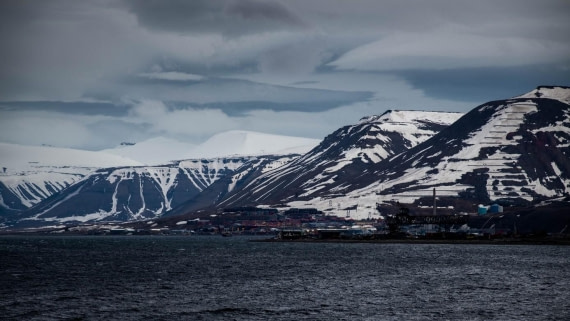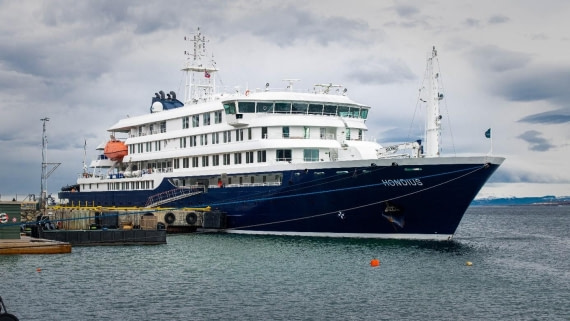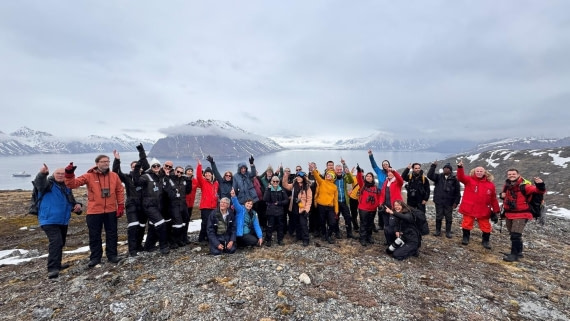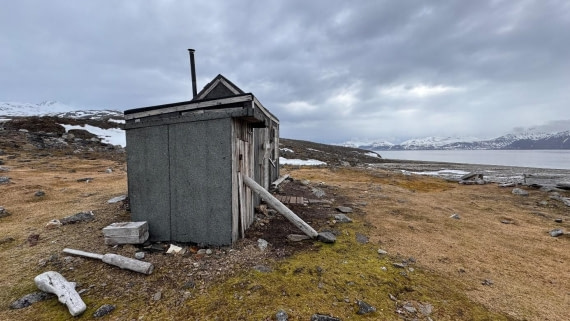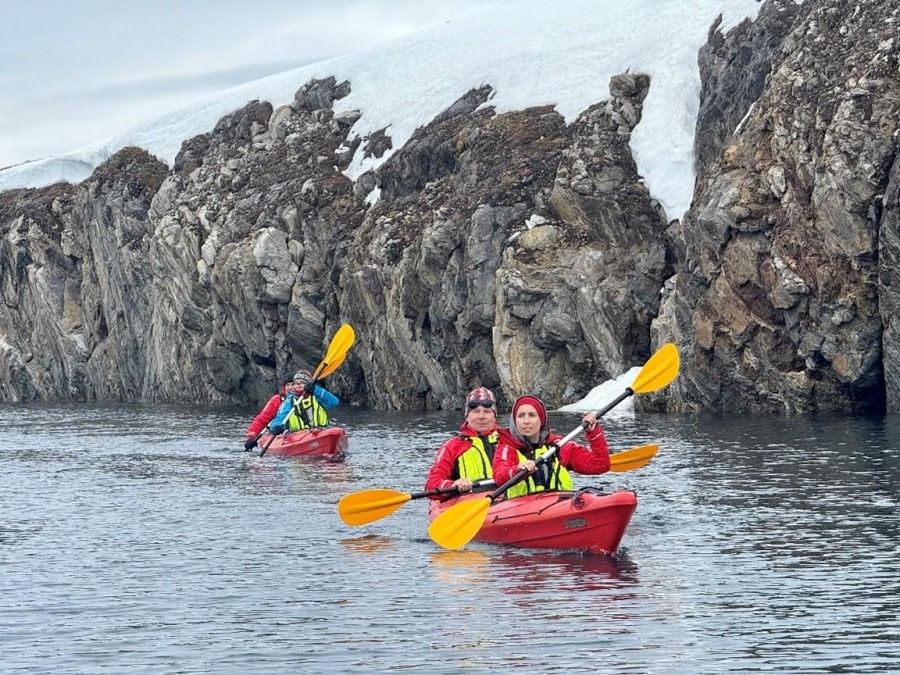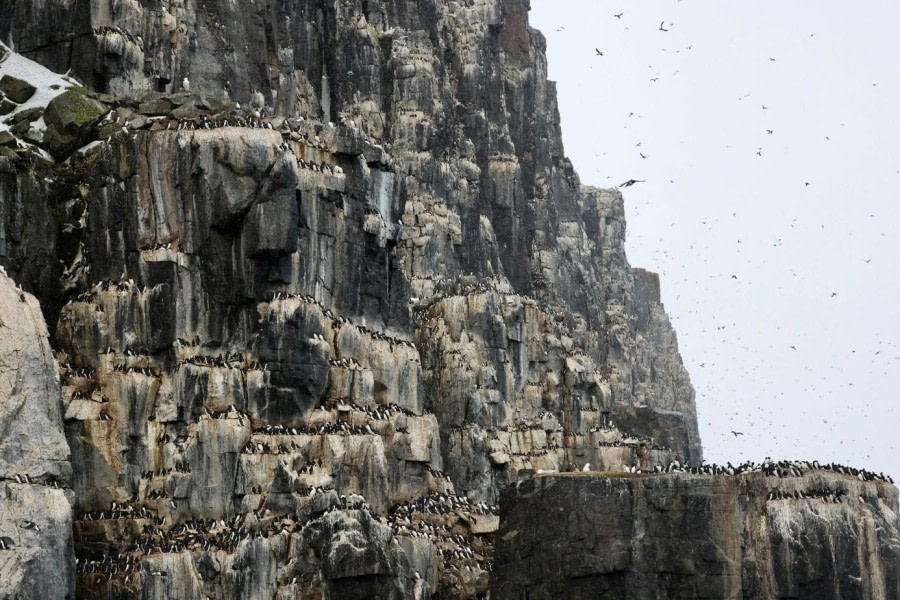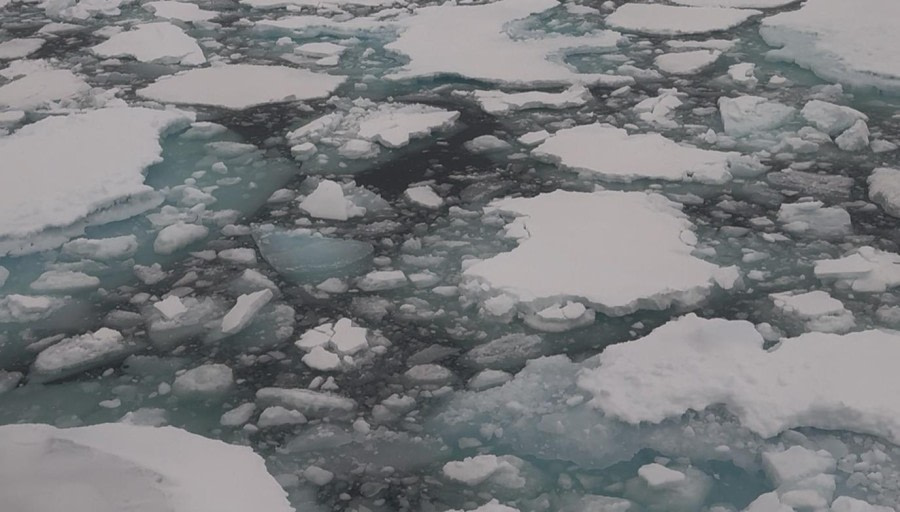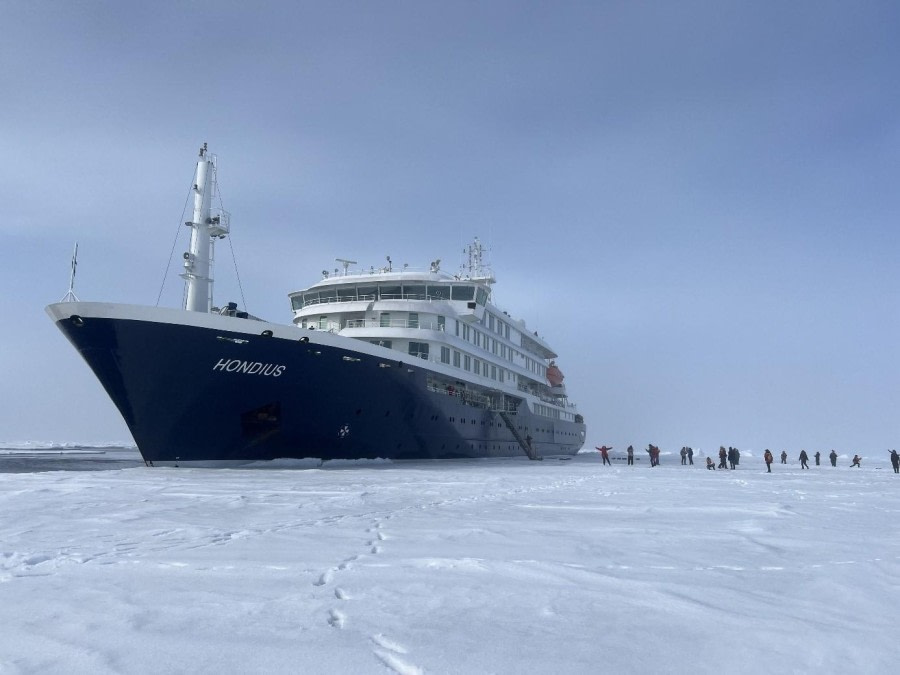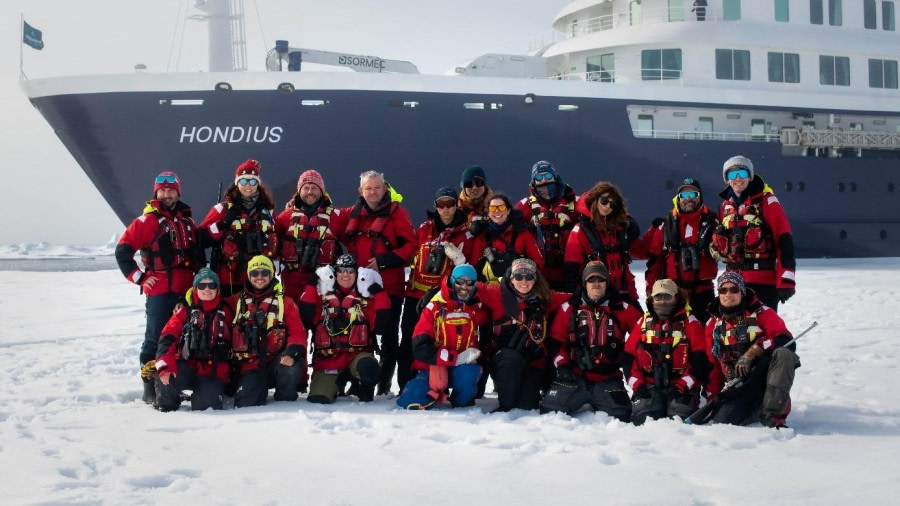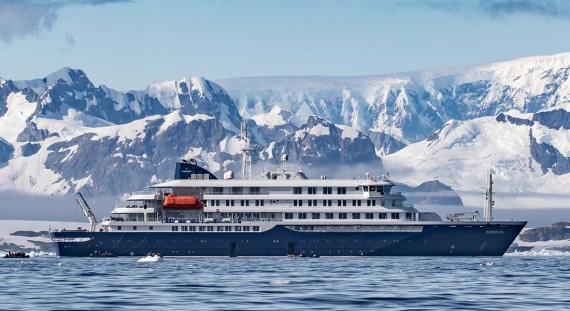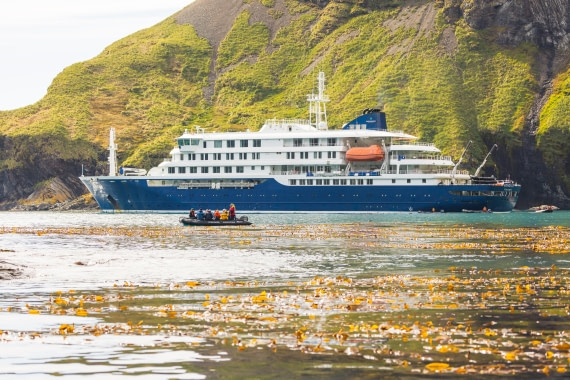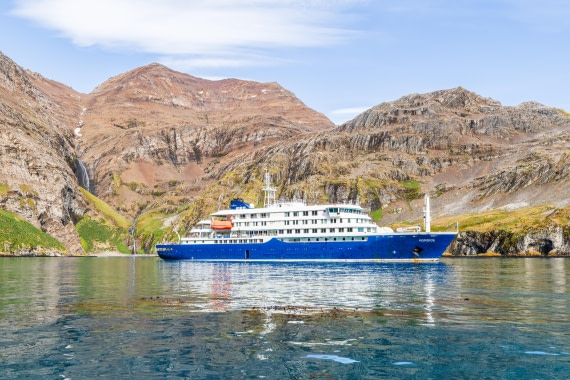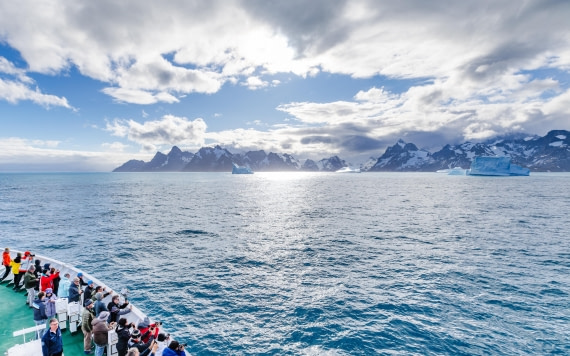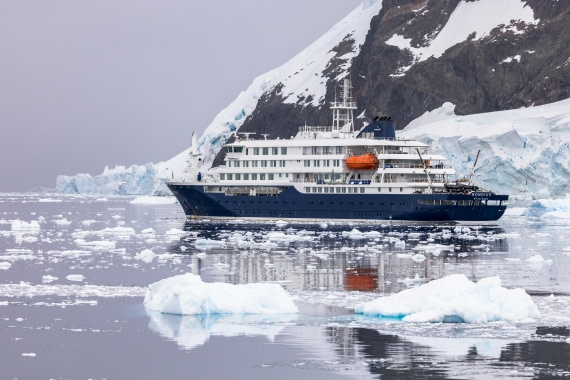| Date: |
12.06.2025 |
| Position: |
80°05.9 N, 016°36.5’ E |
| Wind: |
SSE5-6 |
| Weather: |
Overcast |
| Air Temperature: |
-1 |
We awoke this morning buzzing with anticipation—today was the day we’d cruise the towering cliffs of Alkefjellet by Zodiac. Fortune favored us with calm seas and a soft Arctic light as we boarded our boats and motored toward one of nature’s most staggering bird spectacles: the nesting grounds of some 60,000 pairs of Brünnich’s Guillemots.
As we neared the cliffs, we slowed to a near crawl, the water around us teeming with life. Thousands of Guillemots floated and dove like dancers in a dark sea ballet—wings whirring, beaks flashing. Approaching the cliffs felt like slipping inside a living beehive; the sky pulsed with wings, and the air hummed with an unending chorus of calls, cries, and aerial acrobatics.
Once our senses adjusted to the sheer intensity of it all, we turned our attention to the majestic cliffs themselves—an epic tapestry of black Dolerite and pale Marble, sculpted by time and bursting with birdlife. Then, as if the day couldn’t get more surreal, we spotted movement along the lower rock face: an Arctic Fox, striking and sleek, darted into view. In full daylight and just meters away, it snatched an adult Guillemot, vanishing up the slope with its catch, only to return moments later in search of another. We watched, riveted, as this ghost of the tundra gave us a raw glimpse into the rhythm of predator and prey.
After an unforgettable morning, we retraced our path, once again gliding through the feathered flotilla of Guillemots that peppered the sea like living confetti.
Back onboard, a hearty lunch refueled us as the ship repositioned to Faksvågen for the afternoon. There, our expedition team set a safe, bear-free perimeter for us to explore. Some strapped on snowshoes for a trek through the powdery hills, while others lingered along the beach, soaking in the silence and scale of this untouched Arctic fjord. From the hilltops, the views unfurled in every direction—white wilderness meeting cobalt sea, a reminder of the grandeur that surrounded us.
But the true crescendo of the day came on the return Zodiac ride across the fjord. There, lounging like Arctic royalty on an ice floe were a dozen walrus. Massive and ancient-looking, their sheer bulk on land was staggering—males can weigh over 1,500 kg.
To witness such creatures—symbols of the frozen North—so close, and in their element, was a gift. One that left us awestruck and silent, save for the soft click of cameras and the sound of our own breath catching in wonder.
Another extraordinary moment in a day we’ll carry with us forever.
Kayaking Triplog
This morning, we found ourselves near the towering cliffs of Alkefjellet—home to one of the largest colonies of Brünnich’s guillemots in the Arctic.
With a southerly wind blowing, Paolo dropped us off by zodiac at the southern end of the colony. From there, we let ourselves drift gently with the wind, paddling effortlessly along the base of the cliffs.
The scenery was breathtaking. These basalt cliffs, sculpted by centuries of wind and ice, are riddled with cracks and fissures, where meltwater trickles down in thin streams. The freezing and thawing have fractured the rock into ledges, perfect for nesting. It’s a natural fortress—safe for guillemots, and difficult to access for predators like the Arctic fox. Still, glaucous gulls circle overhead, always on the lookout for a fallen chick or an unguarded egg.
A thin layer of mist drifted across the cliffs, with low clouds adding a mysterious, cinematic atmosphere—something straight out of The Lord of the Rings.
Tens of thousands of birds nest here, and we had the privilege of observing them up close. Guillemots wheeled above us in vast numbers, their calls echoing against the stone. They were everywhere—in the sky, on the ledges, in the water. It was yet another unforgettable moment in the Arctic.
We covered around 4 km, carried by the wind, with barely a paddle stroke—completely immersed in the rhythm of this wild place.
